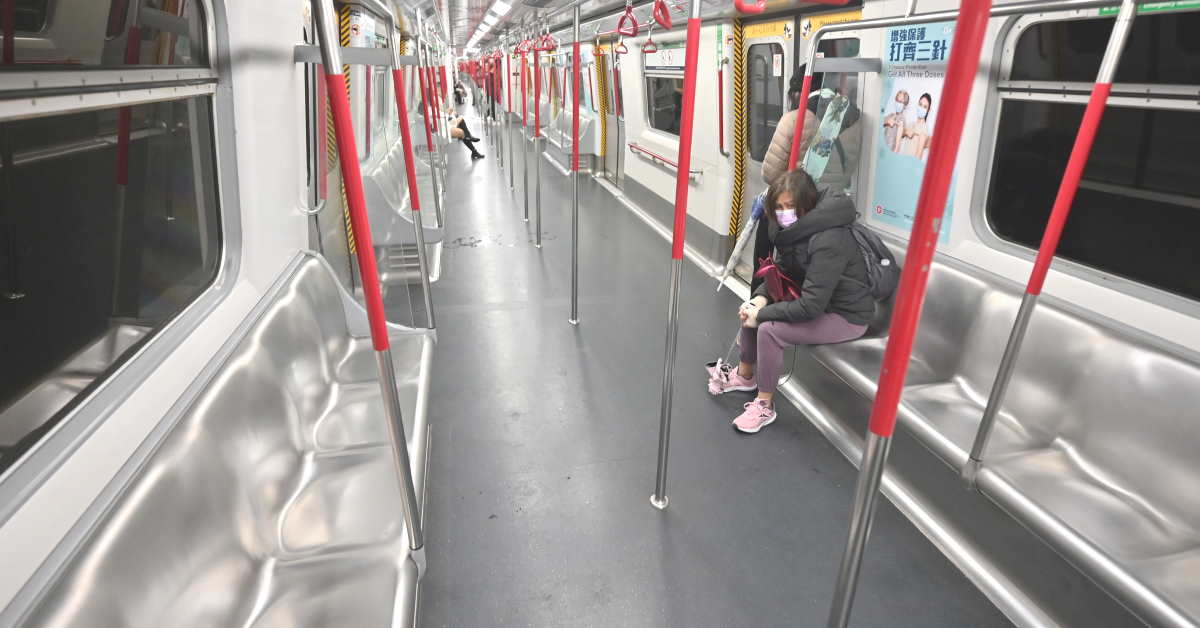Hong Kong's population must undergo three rounds of compulsory coronavirus testing, the city's leader said Tuesday, as she confirmed mainland Chinese officials were stepping up oversight of the financial hub's response to its worst outbreak yet.
The densely populated metropolis is in the throes of a record virus surge with thousands of confirmed cases every day threatening to overwhelm hospitals and the city's strict isolation system.
On Tuesday, Chief Executive Carrie Lam revealed a doubling down of the city government's zero-COVID approach to bring the response much closer to mainland China's as she admitted local authorities had failed to stamp out the current surge.
"This quickly worsening epidemic has far exceeded the Hong Kong government's ability to tackle it, so there is great need for the central government's support in fighting the virus," she told reporters.
Xia Baolong, Beijing's Hong Kong and Macau affairs chief, was coordinating the mainland's response from the border city of Shenzhen, she added.
Under the new rules, all 7.4 million residents will have to go through three rounds of compulsory testing in March, although Lam did not give a start date.
The tests will be spread out over a number of days with residents also having to take multiple rapid antigen tests every day at home in between.
"Those who do not take the universal test will be held liable," Lam warned, adding that there was no guarantee the steps would fully stamp out the current outbreak.
Schools and multiple businesses such as gyms, bars and beauty salons will remain closed into late April with education facilities turned into local testing centres.
Flights from nine countries including Britain and the United States (US) will remain banned.
Isolation Units
Lam also confirmed that Hong Kong would continue trying to isolate all coronavirus patients, including asymptomatic patients, in temporary facilities which are being built with the help of mainland authorities.
"We reiterate that isolation is still our policy objective," she said.
Hong Kong's strict, China-style zero-COVID policy successfully kept the virus mostly at bay the last two years at the expense of marooning the city internationally.
But when the highly contagious Omicron variant eventually broke through earlier this year, authorities were caught flat-footed with few preparations in place and a dangerously under-vaccinated population.
Hospital wards were overwhelmed, testing capacity limits were quickly reached and there has been a massive shortfall in isolation units.
As many rival cities reopened, many public health experts and business leaders argued that Hong Kong should move to a mitigation strategy that planned for living with the coronavirus.
But China, the only major economy still sticking with zero-COVID, made clear last week that was not an option.
During the pandemic's early stages, Beijing used citywide lockdowns and mass testing to stamp out cases. But it has never managed to tackle an outbreak the size of the one facing Hong Kong, even in Wuhan where the coronavirus first emerged.
Lam said that, with mainland help, Hong Kong expected to boost daily testing capacity to one million a day.
Tens of thousands of isolation units and treatment beds would be built in the coming weeks, she added.
But cases in Hong Kong continue to rise exponentially, and it is not clear whether enough units will be available when more cases are discovered during mass testing.
Before the current wave hit in late December, Hong Kong had recorded just 12,000 infections and some 200 deaths.
In the current outbreak it has seen 54,000 cases and 145 deaths.
A new model from the University of Hong Kong estimated that the current outbreak will peak in March with some 180,000 daily infections and nearly 100 deaths per day.
Despite ample supplies, Hong Kong has poor vaccination rates among the elderly.
Only 43 percent of people aged 80 or over have received even one dose.
On Tuesday health officials revealed that, of 102 recent deaths in the current wave, only seven had two doses of a vaccine, while 63 were from care homes for the elderly.
